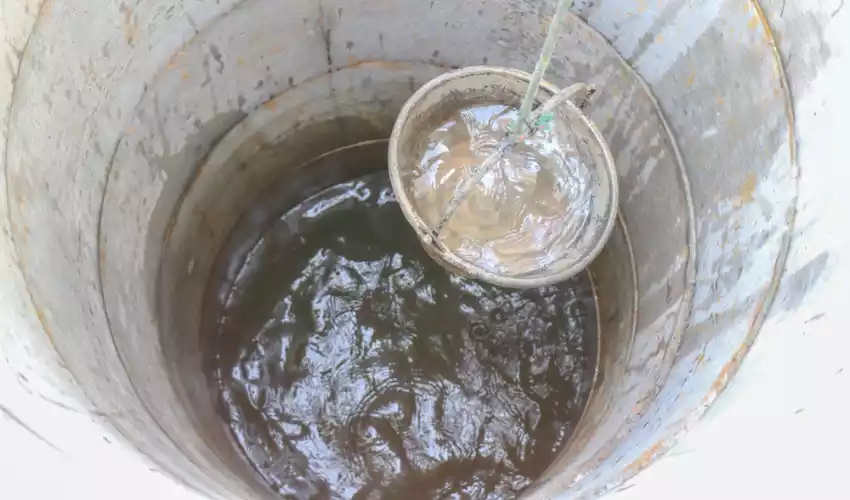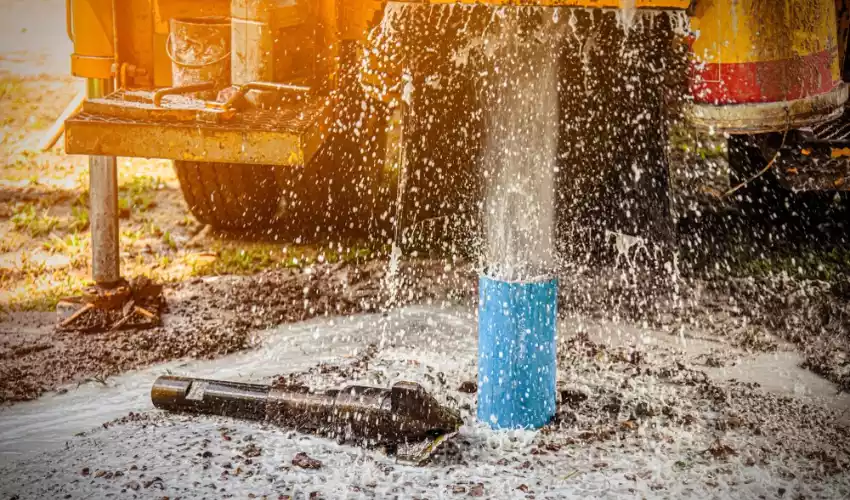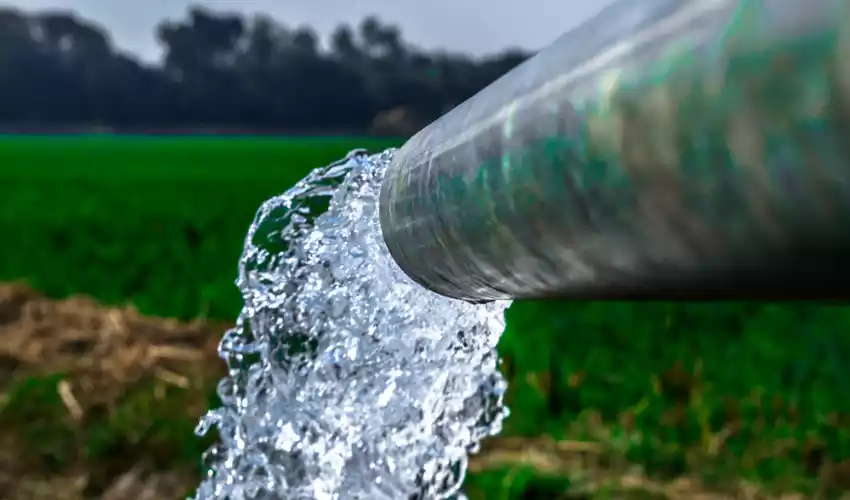Water wells are crucial components of our environment and our lives. They provide us access to a key life-sustaining resource, water, from underground sources. The process by which they refill can be a mystery to many, and knowing this information is critical for their proper use and maintenance.
The time it takes for a water well to refill depends on various factors such as the type of soil, aquifer characteristics, and the usage rate. Typically, a well could take anywhere between 1 to 2 hours to refill after being emptied, but this time can vary greatly depending on the specific conditions.
Maintaining sustainable water wells is essential for our survival and the health of our planet. By learning more about the factors affecting well refill time, we can use this precious resource more efficiently and help protect our environment for future generations.
What is a Water Well?
Water wells are man-made structures that allow us to access the water found in underground aquifers. These structures are created by drilling or digging into the ground until we reach the water table, where water is then pumped to the surface for use.
A water well is basically a hole, drilled deep into the ground, that extends into an aquifer. A pump usually draws water up to the surface.
Water wells are a crucial source of water for many people around the world. In areas where surface water is scarce or not easily accessible, water wells can provide a reliable and consistent source of water.

Water Well Formation
The formation of a water well is a complex process that involves understanding the earth’s water cycle and the role of natural aquifers.
Earth’s Water Cycle Overview
The earth’s water cycle is a remarkable natural process that sustains life on our planet. It’s a constant cycle of evaporation, where water from oceans, rivers, and other bodies transforms into water vapor, rises into the atmosphere, condenses into clouds, and returns to the earth’s surface as precipitation. This rainfall seeps into the ground, filling up aquifers, and also flows into rivers and oceans, replenishing the water that was lost to evaporation. The cycle repeats, creating an endless circulation of water. This vital process replenishes our water wells, influencing their refill time.
Role of Natural Aquifers
Aquifers play a critical part in the replenishment of water wells. These are porous, water-bearing geological formations underground that hold and transmit water. Aquifers collect water over time, primarily from rainfall that seeps into the ground. This water can remain in an aquifer for weeks to thousands of years until it eventually emerges at the surface naturally, often in the form of a spring, or is drawn up by a well. The size, type, and water-holding capacity of the aquifer influence how long it takes for a well to refill.
Well Digging Process
Digging a well is a meticulous process, involving detailed planning and expert execution. First, the location is chosen, taking into account factors such as proximity to the dwelling, accessibility, and safety from contamination sources.
Next, the ground is drilled or dug until the water table is reached, which can be anywhere from 30 feet to several hundred feet deep, depending on the geography of the area.
The sides of the well are then lined with a casing, typically made of steel or PVC, to prevent the well from collapsing and to keep out contaminants. The bottom part of the casing has openings or screens to allow water from the aquifer to enter the well while keeping out sand and other particles.
Factors Impacting Well Refill Time
The refill time of a water well isn’t a constant. Various factors contribute to the time it takes for a well to refill after water has been pumped out.
Soil Permeability and Structure
The type of soil around a well plays a major role in the refill process. For example, sandy soils have larger particles and more significant gaps, allowing water to move more freely and quickly. Conversely, clay soils have smaller particles and gaps, slowing down the movement of water. So, wells in sandy areas can typically refill faster than those in clay-rich regions.

Rainfall and Seasonal Changes
Rainfall patterns and seasons also impact well refill time. Areas with heavy or frequent rain will see a faster refill rate as the rainwater seeps into the ground and replenishes the aquifer. On the other hand, during periods of low rainfall or drought, the aquifer replenishes slowly, leading to slower well refill times.
Aquifer Characteristics
Not all aquifers are created equal. Their size, depth, and permeability – the ability to transmit water – greatly impact well refill times. Larger, more permeable aquifers can replenish wells more quickly than smaller, less permeable ones. Wells tapping into deep or confined aquifers may also experience slower refill times due to the greater distance the water has to travel.
Usage Rate
The rate of water consumption from a well also impacts its refill time. The faster the water is drawn out, the longer the well takes to refill. For example, a small household that uses water sparingly will likely find their well refilling faster than a large household or agricultural operation with high water usage.
Typical Refill Times
Just as there are various types of water wells, there are also different typical refill times. The refill time is often linked to the depth and type of the well, as well as the characteristics of the aquifer it taps into.
Shallow Wells
Shallow wells, also known as dug or bored wells, are typically around 30 to 50 feet deep and tap into the water table close to the surface. Because they’re closer to the surface, they refill faster than deep wells, often within a few hours. However, they are also more susceptible to running dry during periods of low rainfall or high usage.
Deep Wells
Deep wells, also known as drilled wells, can extend hundreds or even thousands of feet into the ground, reaching deep aquifers. Because the water has to travel a greater distance, these wells usually take longer to refill, often several hours or more. But they are also more reliable during droughts because they tap into deep, stable aquifers.
Signs of Slow Refilling
A slow refilling well can be an indication of an underlying issue. It’s important to recognize these signs early to address the problem effectively and protect the long-term viability of the well.
Reduced Water Pressure
Lower-than-normal water pressure is often the first sign of a slow refilling well. If the water from your faucets or showerheads is coming out in a weak flow or takes longer to fill up containers, it could be a sign that your well isn’t refilling as fast as it should.
Inconsistent Water Flow
An inconsistent water flow, where the water sputters out or varies in pressure, could be another sign of a slow refilling well. This could indicate that the water level in the well is fluctuating due to slow refill, causing the inconsistency.

Dry Well Symptoms
In extreme cases, a well may run dry, which means the water level has fallen below the pump intake. This is a serious issue, as it can lead to damage to the well pump and make the well unusable. If you hear the pump running but no water is coming out, it’s likely your well has run dry.
Improving Well Refill Time
If a well is refilling slowly, there are several steps that can be taken to help improve the situation. However, these should be carried out with the assistance of a well professional to ensure they’re done correctly and safely.
Efficient Usage Practices
One of the most effective ways to improve well refill time is to reduce the demand on the well by using water more efficiently. This could include installing water-efficient appliances and fixtures, reducing water use in landscaping, and fixing leaks promptly.
Regular Well Maintenance
Regular maintenance of your well is crucial to ensuring it refills correctly. This can include regularly testing your water, inspecting the wellhead and the area around it, and having the well system inspected by a professional every few years.
Recharge Well Options
In some cases, a well professional might recommend a process called “artificial recharge,” where water is added to the well to replenish it. This could involve redirecting rainwater into the well, or in some cases, pumping water in. This option should be considered only as a last resort and must be conducted under professional guidance due to potential risks, including contamination.
Impact of Climate Change
Climate change, with its potential to alter global weather patterns and influence water availability, is a significant concern for well owners.
Changes in Rainfall Patterns
Climate change can cause significant shifts in rainfall patterns, with some regions expected to receive less rainfall, leading to more frequent or severe droughts. Less rainfall means less water available to replenish the aquifers, thereby slowing down the well refill times.
Effects on Aquifers
Moreover, rising temperatures associated with climate change can increase evaporation rates, leading to a decrease in the overall water available in the hydrological cycle. Additionally, changing weather patterns can disrupt the replenishment of aquifers, affecting the availability of groundwater in the long term.
Adapting Well Usage
Well owners and users will need to adapt to these changes by using water more efficiently and sustainably, developing innovative ways to recharge aquifers, and implementing measures to protect water quality in the face of climate change.
Legal Aspects
There are a variety of legal considerations tied to owning and operating a water well. These can vary greatly by location and include water rights and environmental regulations.
Water Rights and Usage
Water rights are legal entitlements or permissions to use water in a certain way. In many jurisdictions, you may need a permit to withdraw water from a well, particularly for large amounts of water for commercial or agricultural use. It’s crucial to understand your local and state water laws to ensure you’re using your well water legally and ethically.
Environment Regulations
Environmental regulations may also apply to water wells. These can cover everything from the location and construction of the well to its maintenance and closure. For instance, certain distances may need to be maintained between wells and potential sources of contamination, such as septic tanks or chemical storage facilities.
Frequently Asked Questions
How long does it take for a well to refill?
Typically, a well could take anywhere between 1 to 2 hours to refill after being emptied, but this time can vary greatly depending on specific conditions such as the type of soil, aquifer characteristics, and the usage rate.
What can slow down a well’s refill time?
Several factors can slow down a well’s refill time, including the type and structure of the soil, the amount and frequency of rainfall, the size and type of the aquifer, and the rate at which water is being drawn from the well.
What can be done to improve well refill time?
Using water more efficiently, performing regular maintenance on the well, and in some cases, artificially recharging the well can help to improve its refill time.
Conclusion
Water wells are a fundamental part of human civilization, providing access to the precious resource that sustains life. As we continue to depend on groundwater for our survival and livelihood, understanding the factors that influence well refill times is crucial.
With this knowledge, we can use our wells more effectively and sustainably, ensuring that this vital resource continues to be available for generations to come.